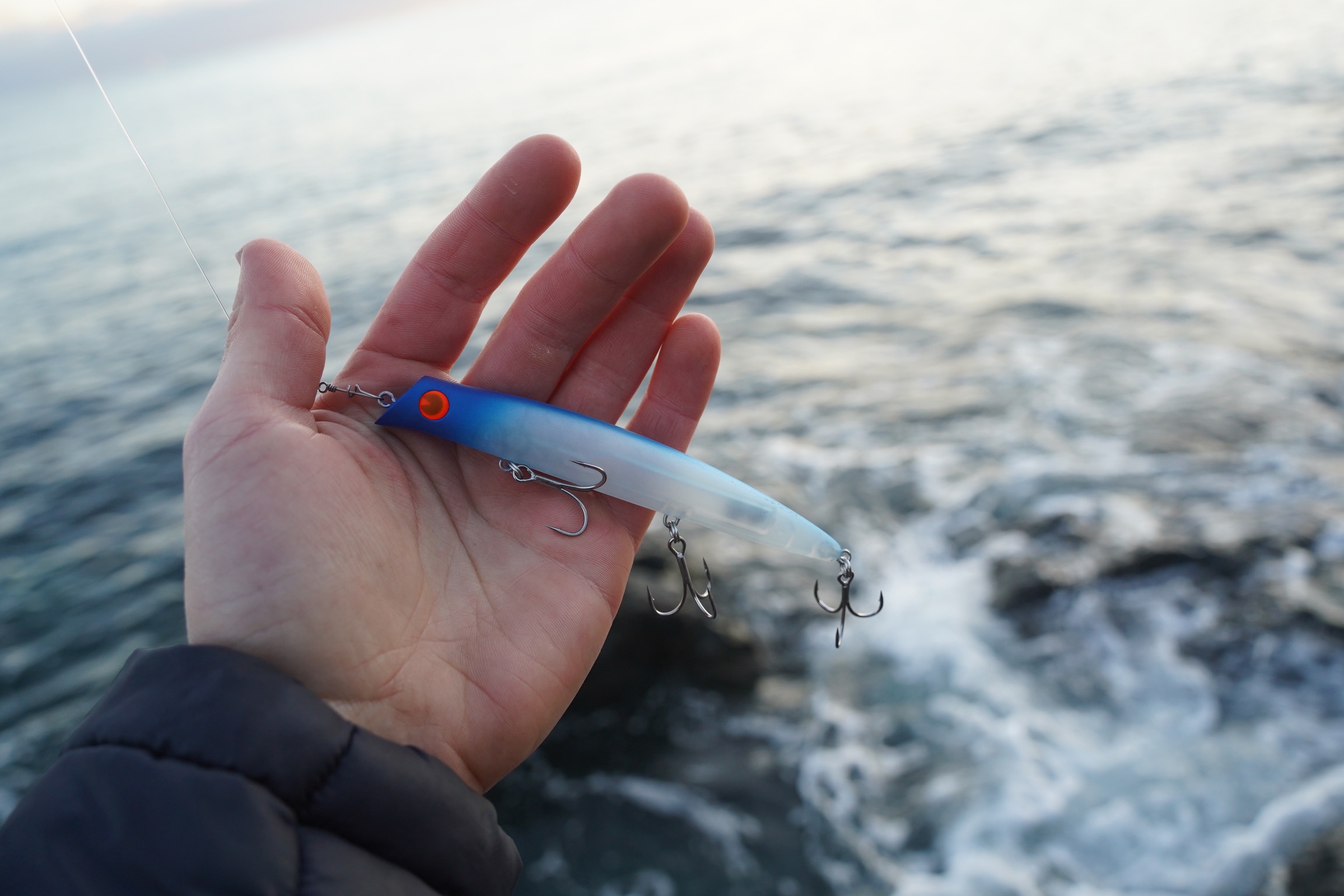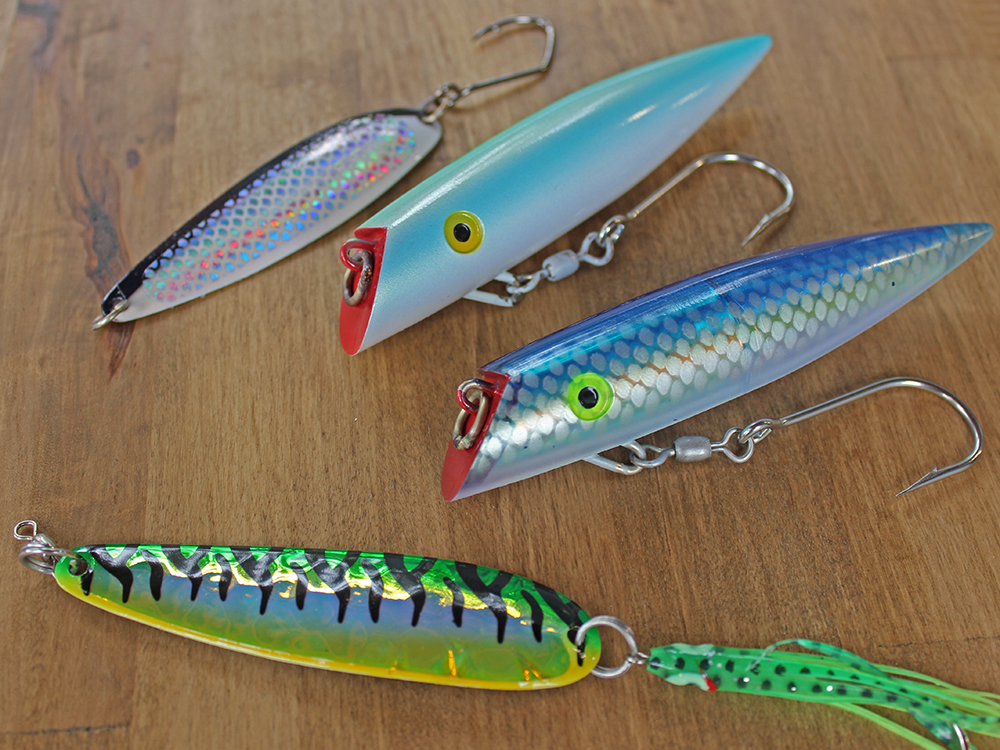A Guide to Fishing Lures That Entice More Fish
Wiki Article
Exploring the Effect of Weather Condition on Choosing the Right Fishing Lures
The partnership between weather and Fishing attraction option is a nuanced topic. Factors such as temperature, humidity, wind speed, and cloud cover play vital roles in influencing fish habits. For instance, warmer temperature levels might need faster attractions, while cooler ones ask for slower choices. Understanding these characteristics can lead to even more successful Fishing trips. The genuine concern remains: just how do these components connect to form the angler's technique?The Function of Temperature Level in Lures Choice
When considering the choice of Fishing appeals, temperature level plays an essential duty in figuring out fish behavior and preferences. As water temperature levels enhance, fish have a tendency to come to be extra active, making them more probable to seek faster-moving lures such as topwater plugs or jerkbaits. Conversely, in cooler temperature levels, fish may become inactive, needing fishermens to select slower presentations, like jigs or soft plastics, that imitate a more refined and all-natural movement.Thermal stratification can additionally influence fish location. In warmer conditions, fish might look for cooler, deeper waters, necessitating lures that can get to those midsts. In contrast, throughout cooler months, fish will certainly commonly inhabit shallower locations, where lighter attractions can be more efficient. Comprehending the impact of temperature on fish behavior makes it possible for fishermens to make informed options concerning lure types, colors, and retrieval speeds, enhancing their chances of success on the water.
Exactly How Moisture Impacts Fish Habits
Humidity plays a considerable role in influencing fish habits, often impacting their feeding patterns and task degrees. When humidity levels are high, fish often tend to be much more energetic and may venture into shallower waters, making them extra easily accessible to fishermens. This increase in activity is often connected to higher oxygen degrees in the water, which enhances fish metabolism. Conversely, low humidity can cause lowered fish task, as they may seek deeper waters where problems are a lot more secure.Additionally, humidity can affect the kinds of lures that are reliable - Fishing Lures. In high humidity, fish might react far better to appeals that mimic the movements of victim, while in reduced moisture, more refined presentations could be needed. Generally, comprehending the connection in between humidity and fish actions can substantially improve a fishermen's success by helping in the choice of ideal appeals and Fishing strategies tailored to current conditions
Wind Rate and Its Influence on Fishing Success
Although frequently neglected, wind rate significantly affects Fishing success by impacting fish actions and the efficiency of various lures. Higher wind rates can develop surface disturbances, making it more challenging for fish to find appeals. As a result, anglers might need to change their strategies, selecting larger or brighter appeals that can stand out in the middle of the choppy water. On the other hand, light winds can bring about calmer problems, encouraging fish to feed more proactively near the surface. In these circumstances, smaller or more subtle appeals may confirm reliable. Wind direction also plays a crucial role; a beneficial breeze can press baitfish in the direction of the shore, drawing in predacious fish. Anglers need to consider these aspects when picking their lures, as adapting to wind problems can greatly improve their opportunities of an effective trip. Eventually, comprehending the connection in between wind rate and fish behavior can bring about more enlightened decisions on the water.Cloud Cover: A Secret Variable in Lures Performance
Cloud cover substantially affects Fishing problems, just like wind speed. The existence of clouds modifies light penetration in the water, impacting fish habits and their feeding patterns. Under overcast skies, fish frequently feel more secure and are most likely to endeavor right into shallower waters, making them a lot more obtainable to fishermens. This adjustment in actions can motivate anglers to pick appeals that resemble the appearance of all-natural prey, such as topwater appeals or subsurface options that create vibrations.
Alternatively, intense, sunny problems might cause fish to pull away to deeper, cooler waters, requiring anglers to change their appeal choices appropriately. In these scenarios, Lures with brighter colors or reflective surface areas can be efficient, as they boost visibility in clear water. Understanding the role of cloud cover allows fishermens to make educated decisions about their lure option, eventually improving their opportunities of a successful Fishing experience.
Adjusting Your Approach for Altering Climate Conditions

As climate condition change throughout the day, anglers should stay attentive and adaptable in their Fishing techniques. Adjustments in temperature level, precipitation, and wind can dramatically influence fish behavior and feeding patterns. Throughout an abrupt decrease in temperature level, fish may retreat to deeper waters, triggering anglers to change their lure types and access techniques. On the other hand, a rise in temperature can provoke surface task, making topwater Lures extra reliable.
Windy conditions can additionally alter water clarity, pressing fish to look for shelter. Anglers must take into consideration making use of attractions with brighter colors or even more my website resonance to stand out in such visit scenarios. Additionally, cloud cover can dictate the time of day when certain attractions are most reliable. By closely keeping an eye on these weather condition modifications and staying versatile in their method, anglers can boost their success prices and adaptively pick the most effective lures for the problems at hand.

Regularly Asked Inquiries
What Types of Attractions Function Best in Cold Climate?
In winter, slow-moving lures such as jigs, spoons, and soft plastics are most efficient - Fishing Lures. These attractions resemble the sluggish habits of target, enticing fish that are less energetic and looking for minimal power expenditureHow Does Barometric Pressure Influence Fish Activity?
Barometric pressure dramatically affects fish task; climbing stress frequently causes minimized feeding, while falling pressure can stimulate raised movement and hostility. Anglers must check these adjustments to maximize their Fishing methods successfully.Are Certain Color Styles Extra Effective in Certain Climate Conditions?
Specific shades can certainly be much more reliable in certain weather. Brilliant colors typically bring in fish in cloudy conditions, while all-natural shades might do much better on sunny days, relying on water quality and fish behavior.Does Rainfall Affect Lures Selection and Fish Feeding Habits?
Rainfall influences appeal selection and fish feeding practices considerably. Enhanced water levels and decreased exposure can prompt fish to seek food closer to cover, typically making brighter attractions a lot more efficient in luring strikes throughout stormy problems.How Do Seasonal Climate Patterns Influence Fishing Attractions?
Seasonal climate patterns considerably affect Fishing lures, as temperature modifications influence fish actions and habitat. Warmer months may require lively, active attractions, while cooler periods typically prefer extra subtle, natural presentations to attract fish successfully.As water temperature levels raise, fish have a tendency to end up being a lot more active, making them a lot more likely to go additional reading after faster-moving lures such as topwater plugs or jerkbaits. In warmer problems, fish might seek cooler, much deeper waters, necessitating lures that can reach those depths. On the other hand, intense, bright problems might create fish to retreat to deeper, cooler waters, needing anglers to change their attraction options appropriately. During a sudden decline in temperature level, fish may retreat to much deeper waters, triggering anglers to adjust their attraction types and access methods. Seasonal weather condition patterns significantly affect Fishing attractions, as temperature level changes affect fish habits and environment.
Report this wiki page